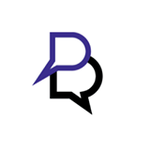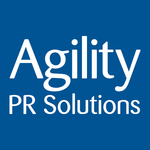What Is PR Software?
Public relations (PR) software is a sort of technology that assists corporations and organizations in managing their interactions and communications with the general public, the media, and other key stakeholders. This program streamlines and automates a variety of public relations duties, including media monitoring, influencer management, crisis management, and press release delivery.
PR software provides a consolidated platform for PR professionals to monitor and analyze their brand's reputation, track media coverage, communicate with journalists and influencers, and assess the effectiveness of their PR efforts. It enables firms to proactively manage their public image and effectively deliver their messages to their target audience.
PR software's primary features include media outreach tools, social media monitoring, a media database, press release delivery, and analytics and reporting. These capabilities enable public relations teams to find media possibilities, generate and send press releases, and track the performance of campaigns. In addition to traditional duties, PR software has advanced capabilities such as sentiment analysis, crisis communication tools, and ROI tracking, making it an indispensable tool for current PR strategy.
It not only saves businesses time and costs, but it also allows them to make data-driven decisions and improve the success of their public relations campaigns. When selecting PR software for your company, it is critical to assess its features, pricing, usability, and customer support. Most PR software has multiple plans based on the size of the business, so it is critical to select a plan that meets your requirements and budget.
What Are The Recent Trends In PR Software?
The world of public relations (PR) has changed dramatically in recent years, thanks to the rise of social media, influencer marketing, and the ever-changing digital landscape. As a result, PR software has evolved to meet the ever-changing needs and wants of businesses and organizations.
Let's explore, we'll go over the latest developments in PR software to assist you make an informed decision when selecting the best solution for your PR requirements.
1. Integration Of Social Media Platforms: One of the most significant trends in PR software is its connection with social media platforms. With the growing usage of social media for brand promotion and customer involvement, public relations software that can connect, administer, and analyze social media platforms has become increasingly important. This enables PR professionals to monitor brand mentions, track conversations, and assess the effectiveness of social media initiatives all from a single, consolidated dashboard.
2. Data-Driven Insights: In today's data-driven environment, public relations professionals no longer make judgments based on their gut sentiments or intuition. As a result, PR software with strong analytics and reporting features has become indispensable. These technologies can collect data from a variety of sources and provide useful insights for measuring the success of public relations campaigns and activities. This allows PR teams to make more informed judgments and customize their strategy for greater results.
3. Influencer Marketing: Influencer marketing has become a critical component of public relations strategy, particularly for consumer brands. As a result, several PR software packages now offer tools for discovering, organizing, and measuring influencer collaborations. These technologies assist public relations teams in identifying influencers that share their brand's values, managing collaborations, and tracking the effectiveness of sponsored content. This trend demonstrates the growing importance of influencer marketing in the PR landscape.
4. AI And ML: AI and machine learning have also made their way into public relations software, enabling advanced capabilities such as sentiment analysis, media monitoring, and automated reporting. These tools can analyze large amounts of data, detect patterns, and provide useful insights and recommendations for public relations tactics. This not only saves time and effort, but also enables PR professionals to make data-driven decisions.
5. Mobile Accessibility: With the growing popularity of smartphones and tablets, PR software that is mobile-friendly has become a must-have for professionals who are constantly on the move. Mobile-friendly versions of PR software enable users to access and control their PR activities at any time and from any location, increasing flexibility and convenience.
Benefits Of Using PR Software
There are numerous reasons why organizations should invest in public relations software. This powerful tool enables firms to better manage and streamline their public relations operations, resulting in enhanced brand visibility, closer connections with the media, and, ultimately, higher ROI.
Let's explore, we will go deeper into the main benefits of adopting PR software, allowing you to make an informed selection for your company.
1. Centralized Management: PR software enables the centralization of all public relations efforts, making it much easier to monitor and manage campaigns, press releases, media mentions, and more. With everything in one location, teams can interact more effectively, lowering the likelihood of miscommunication and errors.
2. Targeted Outreach: PR software's advanced contact databases and media monitoring features allow organizations to discover and contact the most relevant journalists, influencers, and publications for their target audience. This not only saves time, but also increases the likelihood of receiving media attention and reaching the intended audience.
3. Monitoring And Analysis: One of the primary benefits of public relations software is its ability to track and analyze data. PR software provides critical insights that help firms make data-driven decisions to improve their public relations initiatives, including monitoring media mentions, analyzing online traffic, and assessing social media participation.
4. Automation: PR software enables the automation of a variety of processes, including scheduling social media postings, sending out press releases, and tracking media mentions. This saves time and resources while also ensuring uniformity and accuracy in public relations initiatives.
5. Crisis Management: In today's digital world, organizations must be prepared for potential catastrophes. PR software enables firms to monitor internet conversations in real time and respond quickly to any unfavorable news or crises that may affect their reputation.
6. Cost-Effective: Investing in public relations software can significantly minimize the costs associated with traditional PR tactics, such as printing and distributing press releases or paying agencies. Businesses can save time and resources while still obtaining successful public relations results by automating, targeting outreach, and collaborating efficiently.
7. Determine ROI: Finally, with the capacity to track and analyze PR efforts, organizations may calculate the return on investment for their PR initiatives. This enables ongoing optimization of methods and better resource allocation to obtain maximum results.
Important Factors To Consider While Purchasing PR Software?
When it comes to selecting the best PR software for your company, there are several crucial elements to consider. PR software is a great tool for managing and tracking your company's public relations efforts, but with so many options available, making a pick can be overwhelming.
Let's explore, we will discuss the most important factors to consider while selecting public relations software.
1. Your Business Requirements And Goals: Understanding your specific business requirements and goals is the first step in selecting the best public relations software. Are you wanting to boost brand awareness, strengthen media relations, or track press coverage? Make a list of your priorities to serve as a guide when comparing software solutions.
2. services And Functionality: PR software offers a variety of services, including media monitoring, press release distribution, social media analytics, and influencer tracking. Look for software that has capabilities that are relevant to your business needs. Do not be tempted by superfluous bells and whistles that you will never use.
3. User-Friendliness: You don't want complicated, difficult-to-use software. Before making a purchase, ensure that you have tested the user interface and navigation. The software should be simple and straightforward to use, with clear instructions and resources to get you started.
4. Integration: Depending on your organization and present operations, you may need to select PR software that interfaces with other tools such as CRMs, social media platforms, and email marketing software. This enables better workflow and data tracking.
5. Customization And Scalability: As your firm grows, your public relations requirements may alter. Look for software that is adjustable and scalable, so you may add or remove features as needed without having to switch to an entirely new system.
6. Customer Support: As with any program, effective customer assistance is required to solve any technical issues or questions that may emerge. Look for a company with several support channels and a track record of providing responsive and helpful customer service.
7. Pricing: PR software prices might vary, so it's crucial to assess your budget and the tool's return on investment. Compare various suppliers' pricing models, including any additional fees for extra features or services.
When comparing PR software solutions, keep these criteria in mind to make an informed decision that best suits your company's goals. With the appropriate PR software in place, you can successfully manage and improve your public relations activities, resulting in increased brand awareness and success.
What Are The Key Features To Look For In PR Software?
As a buyer in the ever-changing world of public relations, you must have the necessary tools at your disposal to properly manage and enhance your brand's image. This is where public relations software comes in. With so many options on the market, it can be difficult to evaluate which functions are necessary in PR software. First and foremost, top-tier PR software should have strong media monitoring capabilities.
This allows you to monitor your brand's mentions, rival mentions, and industry news in real time. Look for software that provides customisable dashboards and detailed information to help you manage your brand's reputation. Another important element to look for is a media list management system. This enables you to construct and manage complete lists of contacts and channels for distributing press releases and pitches.
Make sure the software supports customisable fields and tags for improved organization and targeting. Social media management is another significant factor to consider while selecting public relations software. Look for solutions that provide scheduling, analytics, and reporting capabilities across many social media networks. The ability to monitor and respond to social media mentions is also a useful tool. For seamless team cooperation, use PR software with project management capabilities.
This enables easy work assignment, progress tracking, and communication within the app. Finally, select PR software that interfaces with other critical tools like customer relationship management (CRM) systems and email marketing platforms. This provides a smooth flow of information and saves time from laborious data entering.
In brief, when looking for public relations software, prioritize features like media monitoring, media list management, social media management, project management, and integration capabilities. With these options at your disposal, you'll be able to efficiently manage your brand's reputation and keep ahead of the curve in the fast-paced world of public relations.
Why Do Businesses Need PR Software?
Effective communication is crucial for the success and growth of any business. Public relations (PR) is a strategic communication process that helps businesses build and maintain positive relationships with their target audience. In today's digital age, having a robust PR strategy is more important than ever. This is where PR software comes into play.
1. Streamlined Workflow: PR software helps businesses streamline their PR efforts by providing a centralized platform for managing media contacts, press releases, and campaigns. This eliminates the need for manual and time-consuming tasks, allowing PR teams to focus on developing effective strategies and building relationships with journalists and influencers.
2. Media Monitoring: With PR software, businesses can monitor media coverage and mentions of their brand in real-time. This allows them to stay on top of their online reputation and respond promptly to any negative mentions. It also provides insights into which outlets are covering their brand and how well their campaigns are performing.
3. Targeted Outreach: PR software allows businesses to create and maintain a database of media contacts, making it easier to target specific journalists, outlets, and influencers. This improves the chances of getting their content published and reaching the right audience.
4. Efficient Content Creation: Most PR software comes with built-in features for creating and distributing press releases, media kits, and other PR materials. This eliminates the need for third-party tools and streamlines the content creation process, saving time and resources for businesses.
5. Measurement And Analysis: PR software provides businesses with measuring and analysis tools, allowing them to track the success of their PR campaigns. This includes metrics like media reach, engagement, and sentiment, providing valuable insights for future strategies.
How Much Time Is Required To Implement PR Software?
The time necessary to develop PR software varies based on the platform and your company's requirements. However, there are some general measures that most firms should take when installing a public relations software solution. Initially, your staff will need to become comfortable with the program and get it up and running.
This could include chores like linking social media accounts, importing contacts, and configuring media lists. The next step is to create your public relations strategy within the software. This could include launching campaigns or generating templates for press releases and pitches. Depending on your degree of knowledge and the complexity of your approach, this step could take a few days to a few weeks.
Once your strategy is in place, you can begin monitoring and participating with media mentions and social media conversations using the program. This ongoing process will necessitate frequent check-ins and adjustments as you monitor your progress and make improvements. Overall, the time necessary to adopt PR software will be determined by how well the software integrates with your existing procedures and how quickly your team adjusts to utilizing it.
To guarantee a successful deployment, adequate time must be set aside for training and troubleshooting. To summarize, while there is no defined schedule for installing PR software, it is critical to properly plan and dedicate adequate time for setup, strategy formulation, and regular monitoring and engagement. This will allow you to make the most of your PR software and reach your company objectives.
What Is The Level Of Customization Available in PR Software?
Every company's public relations needs and goals are unique. That is why it is critical to select a public relations program that allows for extensive customization. Customization enables you to personalize your PR tactics and campaigns to your exact goals and target audience. The level of flexibility offered in PR software varies widely, so it's critical to thoroughly investigate and compare several solutions before making a decision.
Some software may provide rudimentary customization features, such as the ability to include your company's logo and branding on press releases. More complex public relations software, on the other hand, will include a variety of adjustable options that will allow you to completely personalize your campaigns. One of the most important areas of customization in public relations software is media listings.
These lists are useful for targeting the appropriate journalists and media sources with your announcements and pitches. Look for software that lets you generate and segment media lists using particular parameters like region, industry, and topic. Another crucial feature to look for is the ability to tailor content and messaging to multiple media channels and target groups.
This could entail generating multiple copies of press releases or social media postings for different platforms and target audiences.In addition, some public relations software may provide customizable options for tracking and analyzing campaigns. This may include the ability to develop custom reports and dashboards to track the effectiveness of your public relations initiatives and make data-driven decisions for future campaigns.
Finally, the level of customisation available in PR software can have a significant impact on the effectiveness of your PR strategy.By carefully considering your individual objectives and goals, you may select software that provides the necessary amount of customisation to help you succeed in your public relations campaigns.
Which Industries Can Benefit The Most From PR Software?
In today's highly competitive business environment, public relations (PR) has become an essential instrument for establishing and maintaining a positive reputation for any firm or organization. With the rise of digital media, PR software has become an indispensable tool for PR professionals seeking to streamline their efforts and effectively manage their campaigns. But which industries will profit the most from PR software? Let's have a closer look.
1. Public Relations And Communications Agencies: It's no surprise that PR and communications firms are among the most frequent users of PR software. These agencies work with multiple clients at the same time, and public relations software allows them to manage and track all of their media relations efforts from a single platform. PR software, with capabilities such as media monitoring, media contact management, and campaign reporting, improves their workflow and enables them to offer better results to clients.
2. Media And Entertainment: In today's fast-paced media and entertainment industry, having a positive public image is critical to success. PR software assists media and entertainment organizations in monitoring and analyzing media coverage, tracking trends and conversations, and identifying influencers and brand advocates. It also allows them to respond rapidly to bad media coverage and successfully manage crisis communications.
3. Healthcare: The healthcare industry is heavily regulated, so keeping a positive public image is critical for healthcare professionals, pharmaceutical corporations, and medical device makers. PR software enables them to monitor and manage their online reputation, follow and evaluate media coverage, and interact with patients and stakeholders via social media. This is very useful for controlling crises and spreading positive news and updates.
4. Technology: Technology firms are frequently at the forefront of innovation and face stiff competition. PR software enables businesses to track their brand's presence across many digital channels, identify industry trends and thought leadership possibilities, and interact with media and influencers to promote their products and services. It also allows them to monitor their online reputation and respond promptly to any negative press or customer feedback.
5. Non-Profit Organizations: Non-profit organizations rely significantly on public support and media attention to advance their mission. PR software enables them to locate and interact with journalists and influencers in order to promote their message and events, track and analyze media coverage, and coordinate their PR efforts with other marketing and fundraising initiatives.
Conclusion
Finally, selecting the best public relations software for your organization necessitates careful evaluation of a number of critical variables. First and foremost, define your precise requirements and goals to guarantee that the program meets them. Next, compare the features and capabilities of several PR software alternatives to determine which one best matches your needs.
When making a decision, keep your business's size and budget in mind, as well as the software provider's quality of support and training. Look for software that is easy to use and interacts effectively with your existing systems to help you streamline your public relations efforts. Remember to evaluate the software provider's reputation and track record, as well as any other services or tools they may give to help with your public relations plan.
By carefully evaluating all aspects of PR software alternatives, you can make an informed decision that benefits your company and ensures the success of your PR activities. Whether you are a small start-up or a major multinational, there is a public relations software solution available to assist you take your brand to the next level. So, utilize this buyer's guide as a framework for your search and make an informed decision that will benefit your PR efforts.






















